Sabrina Tedeschi and the Wines of Agricola F.lli Tedeschi
(October 24, 2010)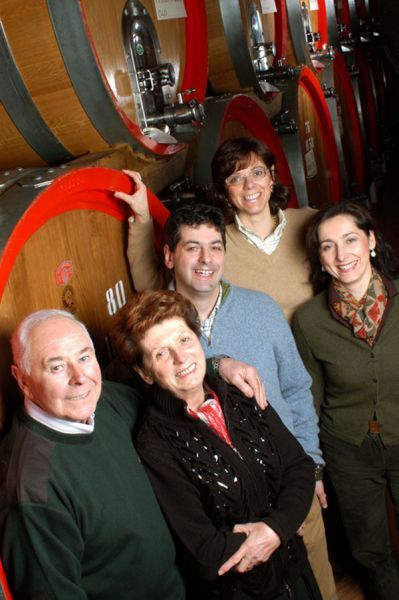
Tedeschi is a Traditional Producer and Uses Only Large Barrels Made from Slovenia Oak to Age Their Wines.This was Music to My Ears and to My Palate
I was invited to SD26 Restaurant [4]to meet Sabrina Tedeschi of the Tedeschi winery, one of the leading wineries in the Veneto. It is a family run winery with a long history in the Veneto. Renzo Tedeschi runs the winery with the help of his three children, Sabrina, Antonietta and Riccardo. I have been a big fan of these wines for a number of years and was very happy to accept the invitation.
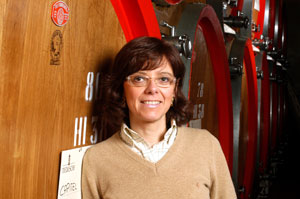 |
| Sabrina Tedeschi |
Sabrina was informative and knowledgeable and we had a very relaxed and enjoyable evening discussing her wines, the winery and the Veneto in general. Sabrina made the point that they were very traditional wine makers and used botti, large barrels made from Slovenia oak to age their wine. They did not use barriques. This was music to my ears and to my palate. We tasted and drank with dinner six wines.
The first wine that Sabrina Tedeschi presented was the Tenda Soave Classico Capitel 2009 100% Garganega. Sabrina said that the grapes for this wine are 20 years and come from the oldest area of origin, that of the comune of Monteforte d’ Alpone. The vines are trained on the Pergola Veronese which is traditional in the Soave area. The grapes are harvested by hand at the beginning of October. The must has a brief contact with the skins and fermentation takes place for about six days in stainless steel tanks. The wine undergoes malolatic fermentation and is stored in these same tanks until bottled. This is a well balanced wine with good fruit and acidity. It had more flavor and body then I expected with a nice finish and aftertaste. Sabrina believed that it should be drunk young within the first four years while it still has its fresh fruity flavors.
Valpolicella Classical Lucchine DOC 2009 It is made from 25% Corvina, 25% Corvnione 30% Rondinella 10% Mollinara and 10% Rossignola, Oseleta, Negrara and Dindarella.
Lucchine is the name of the vineyard where the grapes are grown. The vineyard is located in the plains at the foot of the Pedemonte hills in the historic heart of the Valpolicella area. The vines are over 25 years old. The grapes are hand harvested at the beginning of October. Fermentation takes place in stainless steel tanks. Sabrina said that grapes were in contact with the skins briefly--only eight days. This was to insure that the wine would be fresh and fruity. After malolatic fermentation the wine spends the winter in stainless steel and is bottled in March and released one month later. This wine has fresh red fruit flavors and aromas with hints of cherries, and very good acidity. It is the type of Valpolicella that many producers do not make any more.
I could see myself drinking it with fish on Lake Garda. In fact I could not stop drinking it. Sabrina said it was their every day wine
Valpolicella Classico Superiore Capitel Nicalo Leggero Appassimento DOC 2006 Made from 30% Corvina, 30% Corvinone, 30% Rondinella, and 10% Rossignola, Oseleta, Negrara and Dindarella.
The grapes are dried indoors in plastic creates for one month. Sabrina referred to this as “light drying.” The grapes lose between 8-10 % of their weight. She went on to say that this “light dehydration” enriches the sugar content of the grapes. Fermentation takes place in special small fermentation vats for 14 days. The must is pumped over during steeping to extract the maximum color, body and structure. The wine is then aged in 5000 liter Slavonia oak barrels for 14-16 months and in bottle for 6 months before release. Sabrina said the wine could age for 5- 8 years.
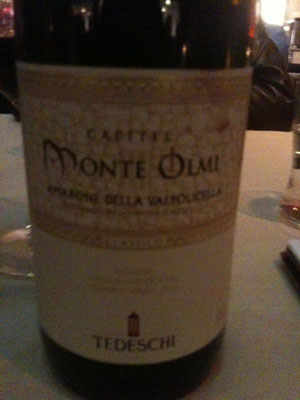 |
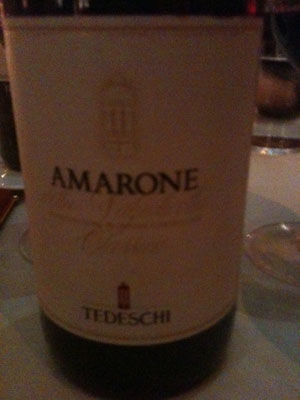 |
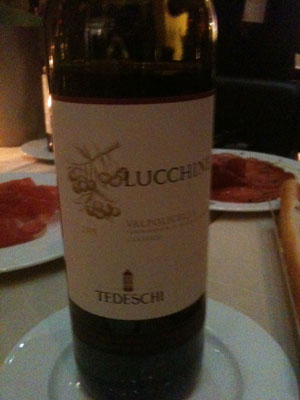 |
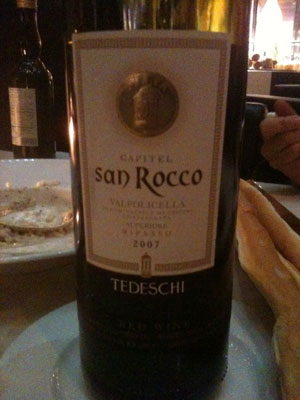 |
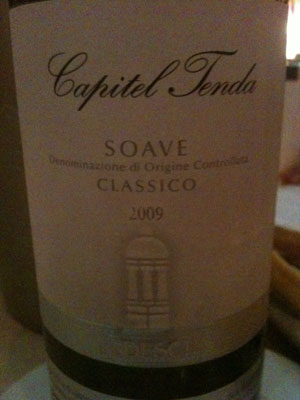 |
Valpolicella Capital San Rocco DOC 2006 – Vino di Rapasso.
The grapes are harvested by hand at the beginning of October. They are then pressed and the stems are removed and the must is placed into small fermentation vats. Fermentation takes place with steeping that lasts for 14 days. After malolatic fermentation, it goes into stainless steel tanks where spontaneous clarification takes place. The partially clarified wine, in March, is poured over Amarone marc (skins and stems).
Sabrina went on to explain the Ripasso Method: Part of the Valpolicella Classico production from the preceding autumn goes into the same tanks that held the wine to be made into Amarone. The wine is removed but the marc (skins and stems) remain in the tank. The Valpolicella is then put into the same tanks – Ripasso=Passover.
When the wine comes in contact with the amarone must ( skis and stems) it goes through another stage of slight alcoholic fermentation that lasts about 8/15 days. According to Sabrina this increases the alcohol content and structure of the wine, improving longevity. It also develops new aromas that create an interesting and complex bouquet. Then the wine is left to age for approximately 1-1/2 years in oak barrels before it is bottled. During this aging the wine acquires a balanced structure; new aromatic contents and its coloring substances are stabilize. The wine is bottled and released after 6 months.
Amarone del Valpolicella DOC 2006. Grapes--same as above
Grapes are harvested by hand at the end of September/beginning of October, and are placed in plastic trays for drying. Drying is done inside in what Sabrina referred to as a fruttaio “fruit-drying facility” at controlled humidity and temperature. She went on the say that gray mold and Botrytis could be controlled in this way. This ensures that the bunches of grapes will be in good health at the end of the drying process (after about 4 months), and to make sure that everything is going well the grapes are periodically inspected during the drying period and especially during the first month. Grapes are more humid at the start of the process and consequently more subject to attack by mold. During January the grapes are gently pressed by a roller press. Fermentation takes place in steel vessels at a temperature of 15°C and with slow 40-day steeping. The wine does not undergo malolatic fermentation. At the end of fermentation the wine is put into Slavonia oak barrels where it remains for two/three years. At the end of this period of aging in the barrel the wine is bottled and refined in the bottle for 6 months before it is sold.
Amarone della Valpolicella Classico Capitel Monte Olmi DOC 2005 Made from 30% Corvina,30% Corvinone, 30% Rondinella and 10% of Oseleta, Negrara, Dindarella, Croatina and Forselina
The grapes are harvested by hand at the end of September and the beginning of October, and are placed in a single layer of plastic trays. These are then placed in fruit-drying facility (at controlled humidity and temperature) and the grapes are left to dry for about 4 months. This partial dehydration of the grapes leads to a natural increase in their sugar content. There is also an enrichment of the wine's dry extract and an increase in the color. Elegant aromas are also formed during drying and blend with fermentation aromas and the tertiary aromas created during low-oxygen aging in oak barrels. These characteristics blend together to create a well-balanced wine with abundant bouquet and excellent body. Pressing takes place without destemming. The presence of stems during fermentation/steeping gives a softer and more permeable cap, preventing oxidation.
Sabrina went on to explain that at the end of alcoholic fermentation they rack the amarone wine in a different stainless steel tank. The fermented amarone grapes with the skins and stems are dry and not green like the grapes at the harvest time. The amarone stems and skins that remain in the tank are usually used for the ripasso vinification (Valpolicella refermented on the marc of amarone), but not the marc of Monte Olmi which is delivered to the distillery and produces a very specific Grappa.
The marc of the other amarones after ripasso vinification is delivery to the distillery for the distillation as well as, according to Italian regulation.
I asked Sabrina about the 2005 and 2006 vintages as it applied to the two amarones we tasted. She said that they were both good vintages but very different. The 2006 is a fruity, more approachable wine with softer tannins which will be ready to drink much sooner than the 2005. The 2005 is less fruity, with very rich tannins and has the greater aging potential. She described the 2005 as a full bodied amarone, very complex with hints of spice and mineral notes, but also elegant with a long finish and memorable aftertaste.
I also asked her what were the current regulations for Amarone and this was her answer. The present regulation for Amarone is the DOCG regulations (Decreto Legislativo 24 marzo 2010). The grapes are the following:
1. Corvina from 45 to 95% (Corvinone may substitute Corvina for up to 50% of this amount)
2. Rondinella 5 - 30 %
3. Other authorized and recommended non-aromatic red varieties from Veronese area may be included for up to 15% of the total. Of this amount, no more than 10% may be used of any single variety.
4. Other authorized autochthones Italian varieties permitted in the Verona area may be included up to 10% of the total.
Molinara is now included in the group 3. Molinara was taken out in the previous regulations in 2007, as the grapes are characterized as having little color, low structure (opposite to the characteristic of Amarone ), but good minerality, good flavor so it could helps to give some complexity to the wine.
As this very enjoyable and informative evening was coming to an end, Sabrina mentioned a new estate that the family had recently purchased.. Because of its terrain and location she felt it was the perfect place to produce quality grapes. I thanked her and told her I look forward to drinking the wines from the new Materngo estate.
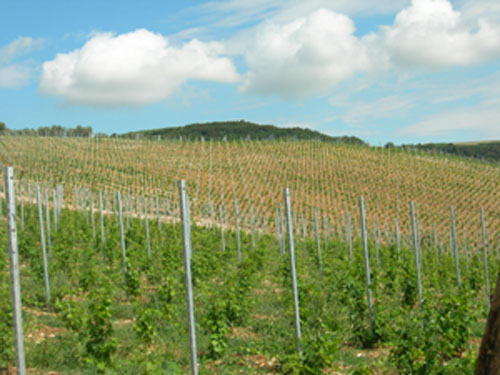 |
| Materngo Estate |
Related Links
- Tedeschi Wines [5]
TAGS
Amarone [6] Monteforte d’ Alpone [7] Sabrina Tedeschi [8] Tedeschi WInery [9] Volpicella [10]



